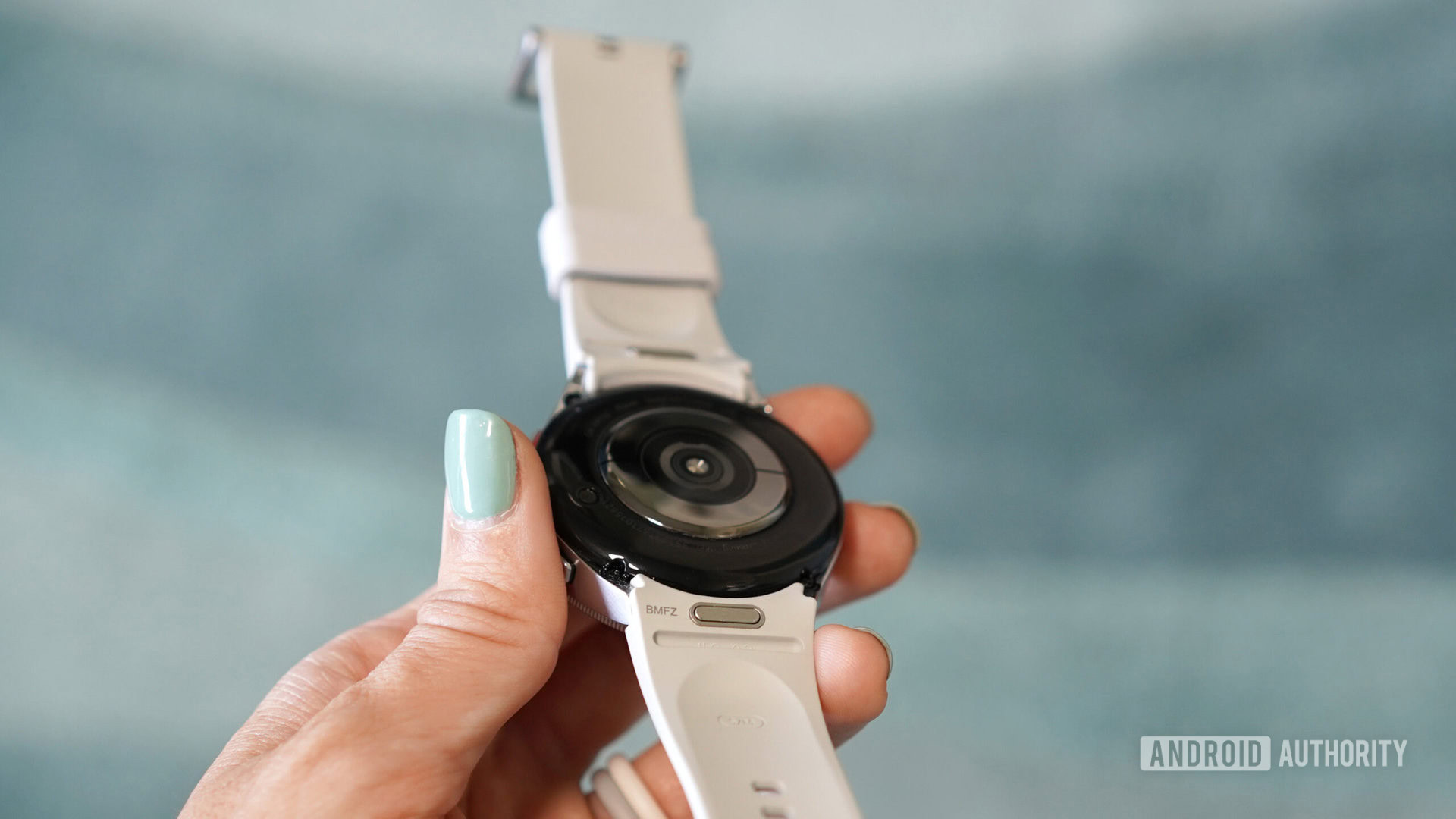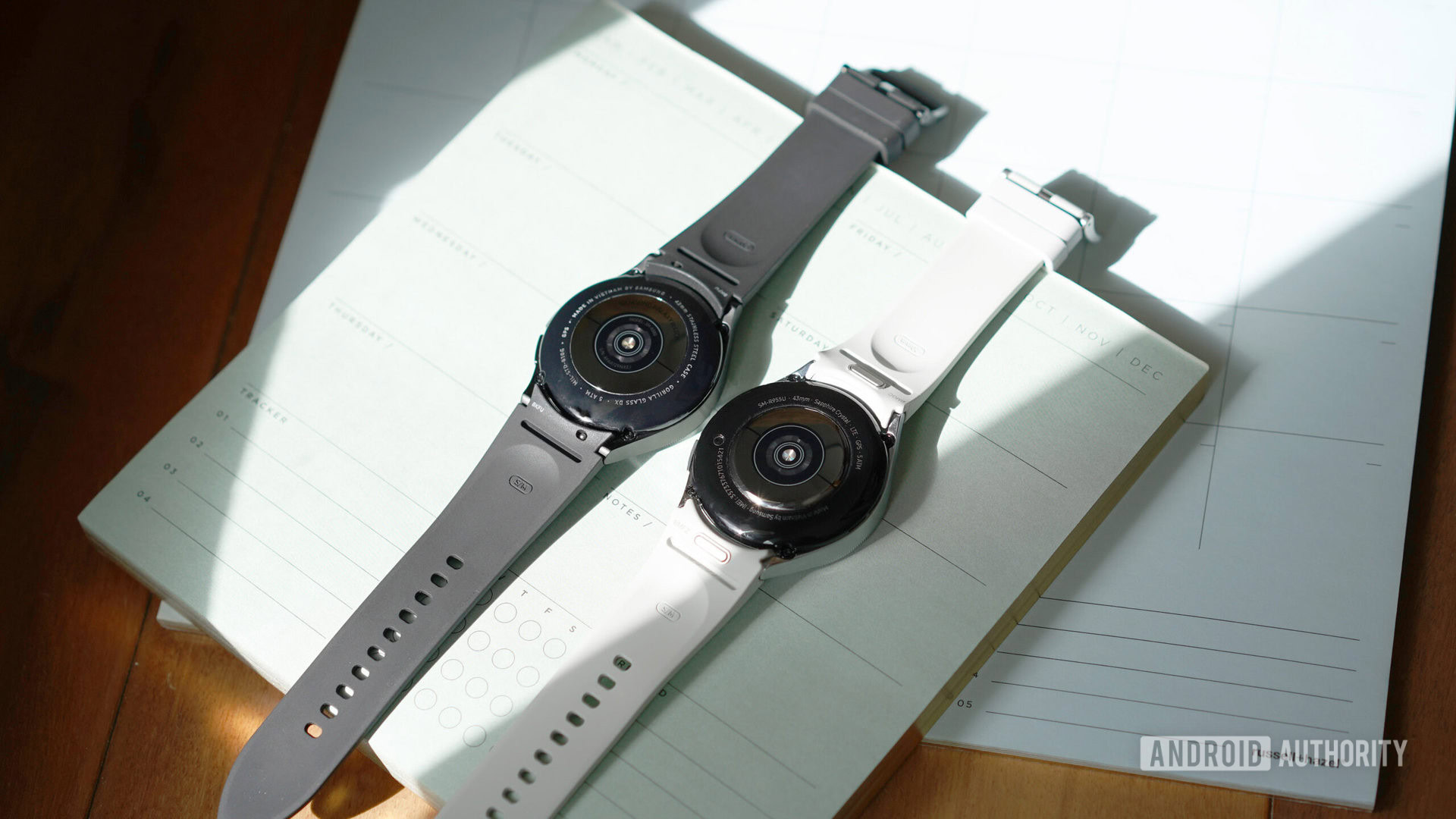Affiliate links on Android Authority may earn us a commission. Learn more.
The Galaxy Watch 6 could literally fall off your wrist, thanks to the new strap
Published onSeptember 6, 2023

- The new straps with the one-click release mechanism on the Galaxy Watch 6 series can have their release buttons accidentally pressed.
- This happens when the watch is worn snugly over the wristbone and can cause the watch to fall off the wrist.
- Users can explore older straps and bands as alternatives, as Samsung has maintained backward compatibility.
The Samsung Galaxy Watch 6 series includes some great smartwatches that are very easy to recommend to Android users. Samsung hasn’t changed much year-on-year with its smartwatch, but one of the more significant changes is the new strap mechanism. However, it seems all is not well with the new strap mechanism, as many users are reporting that the Galaxy Watch 6 has literally fallen off their wrist.
As highlighted by Sammobile, Galaxy Watch 6 series owners have been chiming in on a Reddit thread that points out how the new one-click strap mechanism on the Galaxy Watch 6 series is a design fault.
What is wrong with the strap?
For many users with a pronounced wrist bone, the button on the underside of the strap gets pressed during exercises and other activities. As a result, the strap is released from the watch lug while the owner is still wearing it. Many users have complained that the Watch 6 has fallen off their wrist, often during a run, a bike ride, or other exercises.
Here is a video that shows off the design fault on the new straps:
As we can see in the video, the quick-release button on the new strap gets pressed by the wrist bone, especially if the watch is worn snugly and lower than the wrist bone.
Some users mention that the watch is meant to be worn above the wristbone, though we feel it is unfair to dictate the exact positioning of the watch for thousands of users worldwide. There is no correct “one-size-fits-all” way to wear a watch, as people have different body features and preferences. Some users mention that the strap may be defective or not fitted into the lug properly, though we don’t think that is the case either.
Nonetheless, it would be a harrowing experience to find your new watch on the ground, seemingly because it decided to quick-release itself from your wrist.
How can you stop the Galaxy Watch 6 series from falling off your wrist?
If you purchased the Galaxy Watch 6 or Watch 6 Classic and don’t want your watch to fall off your wrist, there are cheap ways to fix this situation.
Thankfully, Samsung maintained backward compatibility on both the new straps and the lugs on the new smartwatch. You can use the new straps on old smartwatches and use the old straps on the new smartwatches.
You can see the different release mechanisms in this image of the Galaxy Watch 4 Classic next to the Galaxy Watch 6 Classic.

The previous Galaxy Watch 5 and Galaxy Watch 4 series straps use the classic spring bar mechanism. This mechanism is slightly harder to remove than the one-click release mechanism, but that works in its favor.
So you can grab some alternative watch bands off Amazon (be sure to pick the right size for your smartwatch), and you should be able to wear your Galaxy Watch 6 series smartwatch without any worries.
You can explore some Galaxy Watch 6 alternatives if you are still unconvinced. This makes sense if you haven’t purchased the watch yet and would prefer to avoid this situation altogether. I’ve used the Apple Watch, which has a similar button-based release mechanism but requires a more confident push as the button has a deeper actuation point.